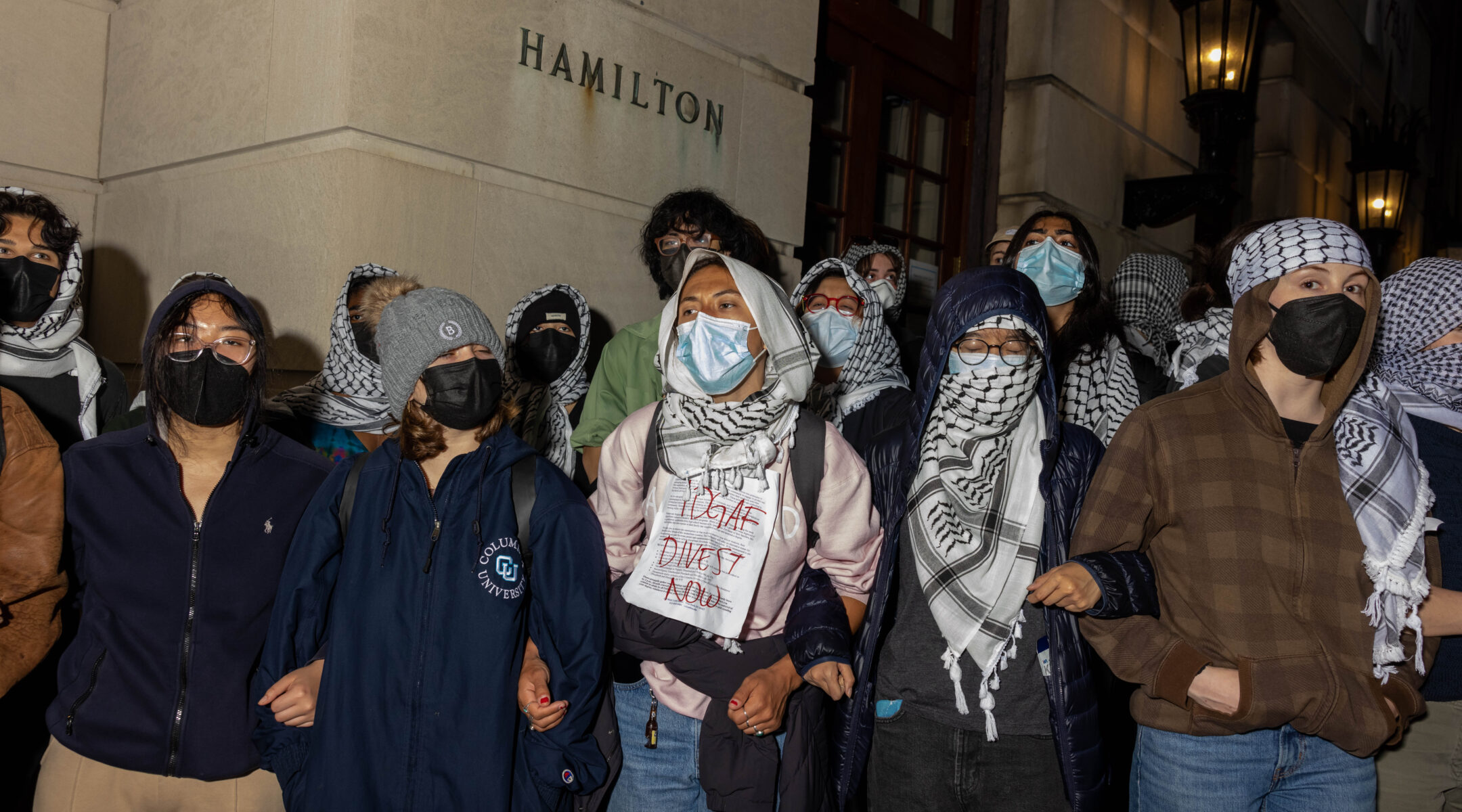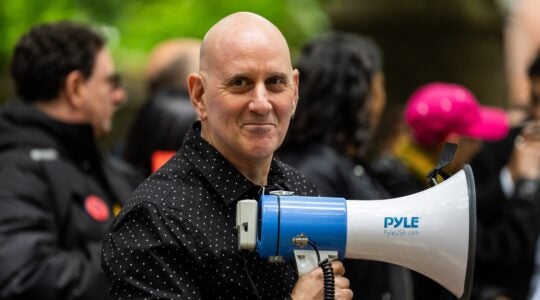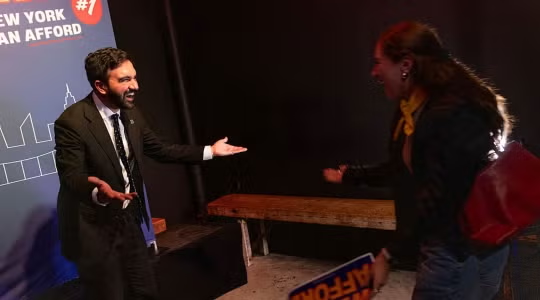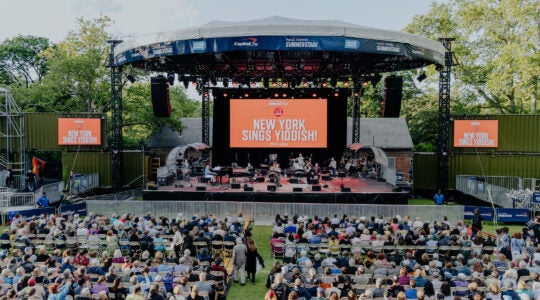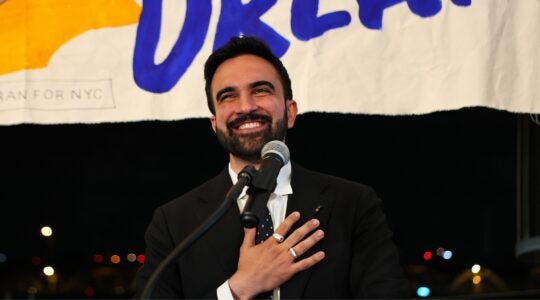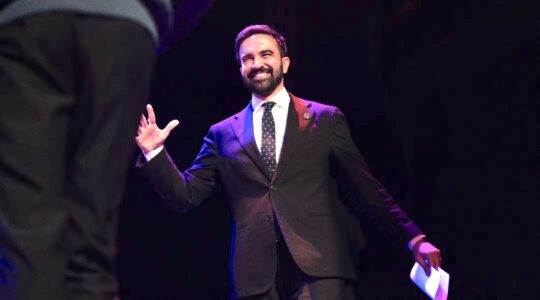(New York Jewish Week) — More than a quarter of the people arrested when police cleared pro-Palestinian protesters out of an occupied building at Columbia University on Tuesday night were not affiliated with the school, the NYPD said.
An initial analysis by police found that of the 112 people arrested at Hamilton Hall, 80 were affiliated with Columbia. The remaining 32 were neither students nor faculty, the NYPD told the New York Jewish Week.
The role of outsiders in the protest has become a focal point in the aftermath of the police crackdown, and Mayor Eric Adams cited the alleged presence of “outside agitators” as a reason for ordering the NYPD to clear out the building. But authorities had not previously specified any details about the people arrested in the building.
The arrested protesters ranged in age from 18 to 64, according to a joint statement from the NYPD and mayor’s office, and they face charges including burglary, criminal mischief, resisting arrest, trespassing and disorderly conduct. Adams said in a statement that the figures made clear “the extent to which outsiders were actually present.”
The numbers came amid mounting revelations about the identities of people who participated in the protests at Columbia. At least one person arrested was affiliated with the university’s chapter of Jewish Voice for Peace, the anti-Zionist group that has joined the encampment movement, according to a JVP spokesperson.
At least two unaffiliated protesters who were involved in Columbia’s pro-Palestinian encampment have been identified: One is Lisa Fithian, 63, a longtime progressive activist who was spotted in footage of the Hamilton takeover, according to the New York Times. The other, Nahla Al-Arian, was cited by Adams in an interview with National Public Radio. Neither was among those arrested.
“What really was a tipping point for me was when I learned that one of the outside agitators’ … husband was arrested for federal terrorism charges,” Adams told NPR on Thursday. “I knew I could not sit back and state that I’m going to allow this to continue to escalate.”
Al-Arian visited the encampment on April 25; her husband, Sami Al-Arian, was arrested in 2003 for allegedly supporting the Palestinian Islamic Jihad terror group, which is based in Gaza. He was not convicted but pleaded guilty to a lesser charge in 2015 and was deported to Turkey.
Nahla Al-Arian told the Associated Press that she visited the encampment but did not engage with the protesters. Her husband posted a photo on X showing her sitting outside a protest tent.
During the two weeks when the protest encampment was up, pro-Palestinian demonstrators gathered daily on the street outside the campus, sometimes engaging with the student protesters through a security gate. The university arrested more than 100 people when the encampment first formed but later entered into negotiations with the protesters, who had demanded that Columbia divest from Israel and cut ties with Israeli academic institutions.
The occupation of Hamilton Hall, an academic building on Columbia’s Morningside Heights campus, came after those negotiations ended in an impasse and Columbia ordered the encampment dismantled. It rocked a university already reeling from months of disruptive protests — during which Jewish students told the New York Jewish Week that they believed the most openly antisemitic protesters were not Columbia students — and reverberated nationwide.
The protesters forcibly took over the building overnight on Monday. Some smashed the hall’s windows with hammers and barricaded themselves inside with couches and vending machines. Following the Hamilton Hall takeover, the university again called in the police, who could only access the private campus at the invitation of the administration or in the case of a life-threatening emergency.
Videos released by the NYPD on Wednesday and Thursday showed officers climbing into Hamilton Hall via a vehicle-mounted ladder, breaking through a door using a hammer and crowbar, cutting through chained doors with a power saw, and scuffling with masked demonstrators.
The NYPD said most of the arrested protesters did not cooperate with police by providing them with information, slowing down the identification of Columbia students and faculty. Police shared a photo of the encampment’s “community guidelines” handwritten on a sign, which included a directive against complying “with any demands” from the NYPD.
Columbia’s president, Minouche Shafik, has asked the police to remain on campus until May 17, two days after commencement ceremonies are slated to take place.
The number of unaffiliated protesters among those arrested raises questions about how they accessed the campus. Entry was restricted to those with a Columbia ID, though at previous points since the encampment went up, ID holders were allowed to bring guests to campus.
After Hamilton Hall was occupied and barricaded, the access rules were tightened further, excluding everyone but students who live on campus and essential personnel. Columbia did not immediately respond to a request for comment.
Police also cleared protest encampments at the City College of New York and New York University. Neither is a closed campus, and those arrested at both of those schools included a large number of non-students.
At the City College of New York, 68 of the 102 protesters arrested, or 60%, were not students, police said.
The student protesters at Columbia had previously collaborated with external pro-Palestinian groups, including hardline organizations. In March, students held an unauthorized “Resistance 101” event in campus housing that saw speakers praise Hamas. Speakers at the event included leaders of the pro-Palestinian groups Within Our Lifetime and Samidoun, both of which back terror groups.
The New York Jewish Week brings you the stories behind the headlines, keeping you connected to Jewish life in New York. Help sustain the reporting you trust by donating today.
